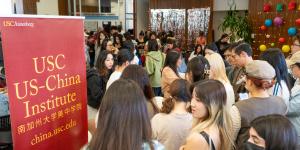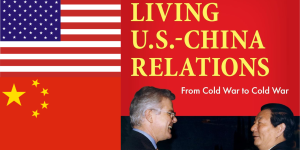Join us for a free one-day workshop for educators at the Japanese American National Museum, hosted by the USC U.S.-China Institute and the National Consortium for Teaching about Asia. This workshop will include a guided tour of the beloved exhibition Common Ground: The Heart of Community, slated to close permanently in January 2025. Following the tour, learn strategies for engaging students in the primary source artifacts, images, and documents found in JANM’s vast collection and discover classroom-ready resources to support teaching and learning about the Japanese American experience.
Living Shrines of Uyghur China
Rubin Museum of Art will host an exhibition of Lisa Ross' photographic exploration of Xinjiang and Uyghur culture in the context of rapid globalization
Where

Photography by Lisa Ross
The Xinjiang Uyghur Autonomous Region is China’s largest province. It came under Chinese rule in 1949. With few exceptions, artists and foreign researchers have been denied meaningful access to the rural areas in Xinjiang. Ross's close working relationships with a Uyghur anthropologist and a French historian focusing on Central Asian Islam have guided her more than eight-year exploration in the region. The extensive body of work from which this exhibition draws is rare in that it captures a time and place that is rapidly modernizing and transforming, as Xinjiang is now China’s largest source of untapped natural gas, oil, and minerals.
Ross’s work broadens our understanding of an understudied region at one of the world’s greatest cultural crossroads. At the same time, the conceptual and aesthetic dimensions of Ross’s photographs speak to the visual beauty, visceral ardency, and sacred gravity of these sites. The depth of Ross’s work will be enhanced by a book, Living Shrines of Uyghur China, to be released by Monacelli Press at the time the exhibition opens.
Curated by Beth Citron
This exhibition is supported, in part, by Peter Hutchings and Martha Wolfgang.
Featured Articles
Please join us for the Grad Mixer! Hosted by USC Annenberg Office of International Affairs, Enjoy food, drink and conversation with fellow students across USC Annenberg. Graduate students from any field are welcome to join, so it is a great opportunity to meet fellow students with IR/foreign policy-related research topics and interests.
RSVP link: https://forms.gle/1zer188RE9dCS6Ho6
Events
Hosted by USC Annenberg Office of International Affairs, enjoy food, drink and conversation with fellow international students.
Join us for an in-person conversation on Thursday, November 7th at 4pm with author David M. Lampton as he discusses his new book, Living U.S.-China Relations: From Cold War to Cold War. The book examines the history of U.S.-China relations across eight U.S. presidential administrations.




